 |
|
|||
|
|
| |
 |
|
THE PLANT- PROFILE
Jatropha curcus is a drought-resistant perennial, growing well in marginal/poor soil. It is easy to establish, grows relatively quickly and lives, producing seeds for 50 years. Jatropha the wonder plant produces seeds with an oil content of 37%. The oil can be combusted as fuel without being refined. It burns with clear smoke-free flame, tested successfully as fuel for simple diesel engine. The by-products are press cake a good organic fertilizer, oil contains also insecticide. It is found to be growing in many parts of the country, rugged in nature and can survive with minimum inputs and easy to propagate.
Medically it is used for diseases like cancer, piles, snakebite, paralysis, dropsy etc. Jatropha grows wild in many areas of India and even thrives on infertile soil. A good crop can be obtained with little effort. Depending on soil quality and rainfall, oil can be extracted from the jatropha nuts after two to five years. The annual nut yield ranges from 0.5 to 12 tons. The kernels consist of oil to about 60 percent; this can be transformed into biodiesel fuel through esterification. Family: Euphorbiaceae Synonyms: Curcas purgans Medic. Vernacular/common names: English- physic nut, purging nut; Hindi - Ratanjyot Jangli erandi; Malayalam - Katamanak; Tamil - Kattamanakku; Telugu - Pepalam; Kannada - Kadaharalu; Gujarathi - Jepal; Sanskrit - Kanana randa. 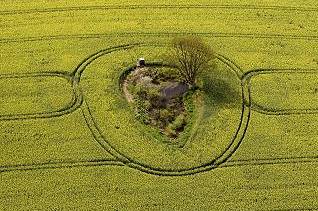 Distribution and habitat Distribution and habitat It is still uncertain where the centre of origin is, but it is believed to be Mexico and Central America. It has been introduced to Africa and Asia and is now culti-vated world-wide. This highly drought-resistant spe-cies is adapted to arid and semi-arid conditions. The current distribution shows that introduction has been most successful in the drier regions of the tropics with annual rainfall of 300-1000 mm. It occurs mainly at lower altitudes (0-500 m) in areas with average an-nual temperatures well above 20°C but can grow at higher altitudes and tolerates slight frost. It grows on well-drained soils with good aeration and is well adapted to marginal soils with low nutrient content. 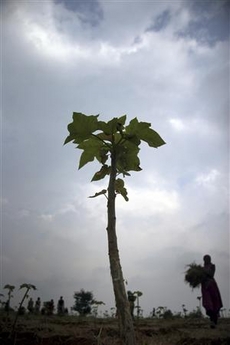 Botanical Features Botanical Features
It is a small tree or shrub with smooth gray bark, which exudes a whitish colored, watery, latex when cut. Normally, it grows between three and five meters in height, but can attain a height of up to eight or ten meters under favourable conditions.
It has large green to pale-green leaves, alternate to sub-opposite, three-to five-lobed with a spiral phyllotaxis.
The petiole length ranges between 6-23 mm. The inflorescence is formed in the leaf axil. Flowers are formed terminally, individually, with female flowers usually slightly larger and occurs in the hot seasons. In conditions where continuous growth occurs, an unbalance of pistillate or staminate flower production results in a higher number of female flowers.
Fruits are produced in winter when the shrub is leafless, or it may produce several crops during the year if soil moisture is good and temperatures are sufficiently high. Each inflorescence yields a bunch of approximately 10 or more ovoid fruits. A three, bi-valved cocci is formed after the seeds mature and the fleshy exocarp dries.
The seeds become mature when the capsule changes from green to yellow, after two to four months
The trees are deciduous, shedding the leaves in the dry season. Flowering occurs during the wet season and two flowering peaks are often seen. In permanently hu-mid regions, flowering occurs throughout the year. The seeds mature about three months after flowering. Early growth is fast and with good rainfall conditions nursery plants may bear fruits after the first rainy season, direct sown plants after the second rainy season. The flowers are pollinated by insects especially honey bees. 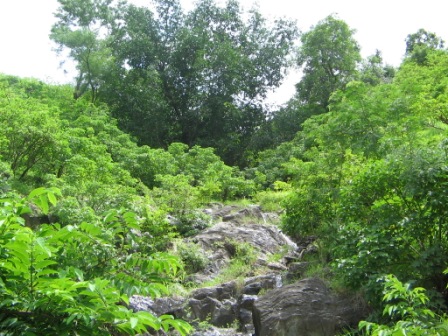 Ecological Requirements Ecological RequirementsJatropha curcas grows almost anywhere , even on gravelly, sandy and saline soils. It can thrive on the poorest stony soil. It can grow even in the crevices of rocks. The leaves shed during the winter months form mulch around the base of the plant. The organic matter from shed leaves enhance earth-worm activity in the soil around the root-zone of the plants, which improves the fertility of the soil. Regarding climate, Jatropha curcas is found in the tropics and subtropics and likes heat, although it does well even in lower temperatures and can withstand a light frost. Its water requirement is extremely low and it can stand long periods of drought by shedding most of its leaves to reduce transpiration loss. Jatropha is also suitable for preventing soil erosion and shifting of sand dunes.
Soil type: Grows on well-drained soils with good aeration and is well adapted to marginal soils with low nutrient content. On heavy soils, root formation is reduced. Jatropha is a highly adaptable species, but its strength as a crop comes from its ability to grow on very poor and dry sites. |
© 2004- 2025 ABC-Advanced Biofuel center ,, All Rights Reserved |

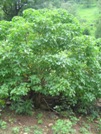 INTRODUCTION
INTRODUCTION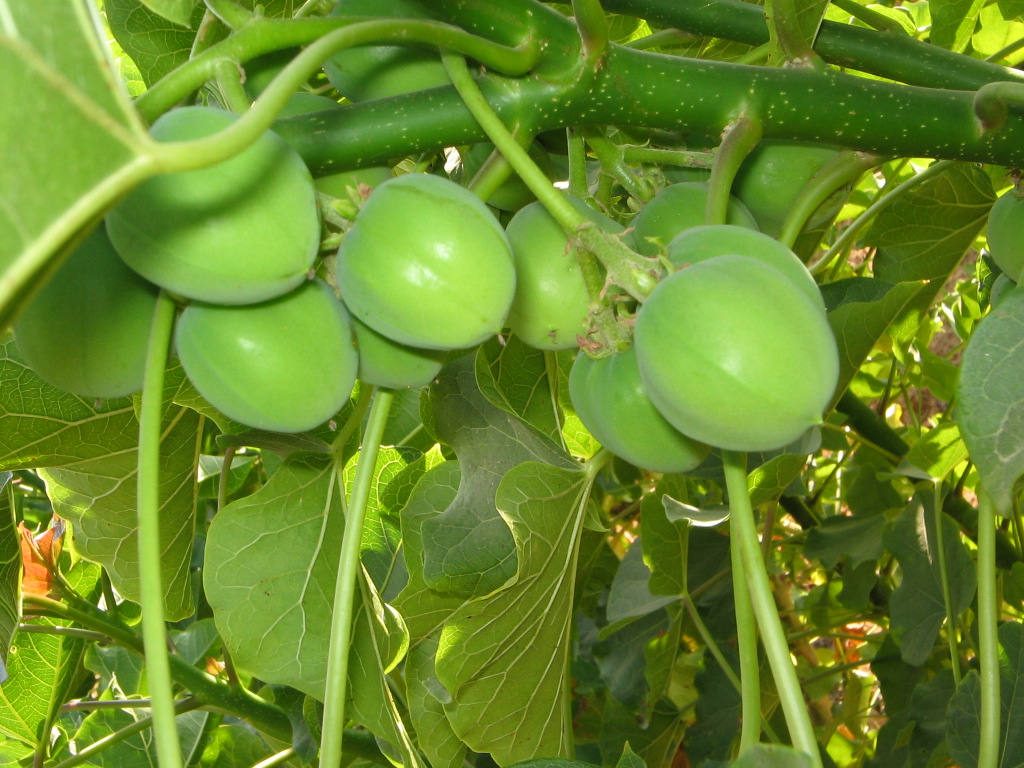 Leaves
Leaves Flowers
Flowers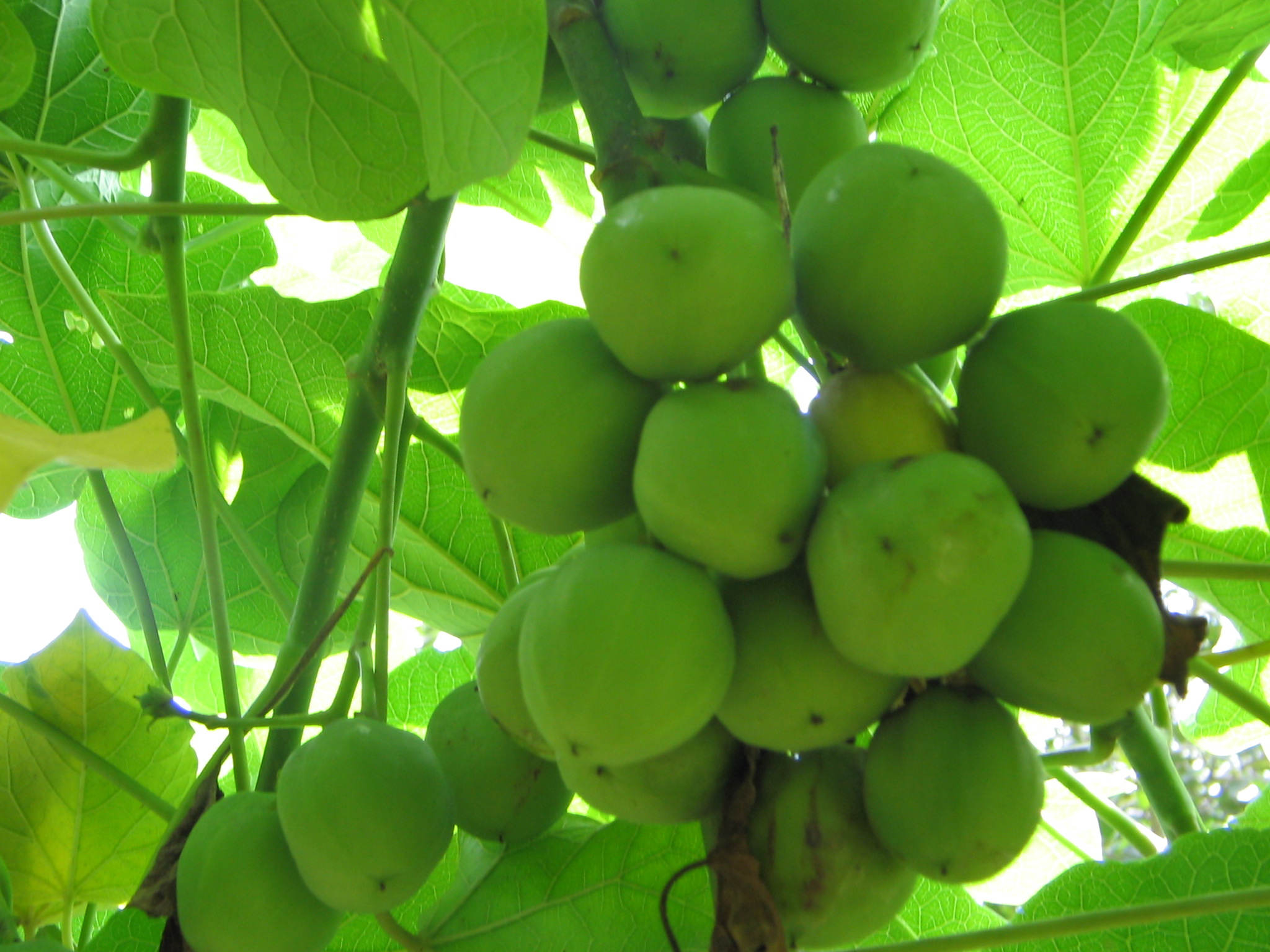 Fruits
Fruits Flowering and fruiting habit
Flowering and fruiting habit  Biophysical limits
Biophysical limits